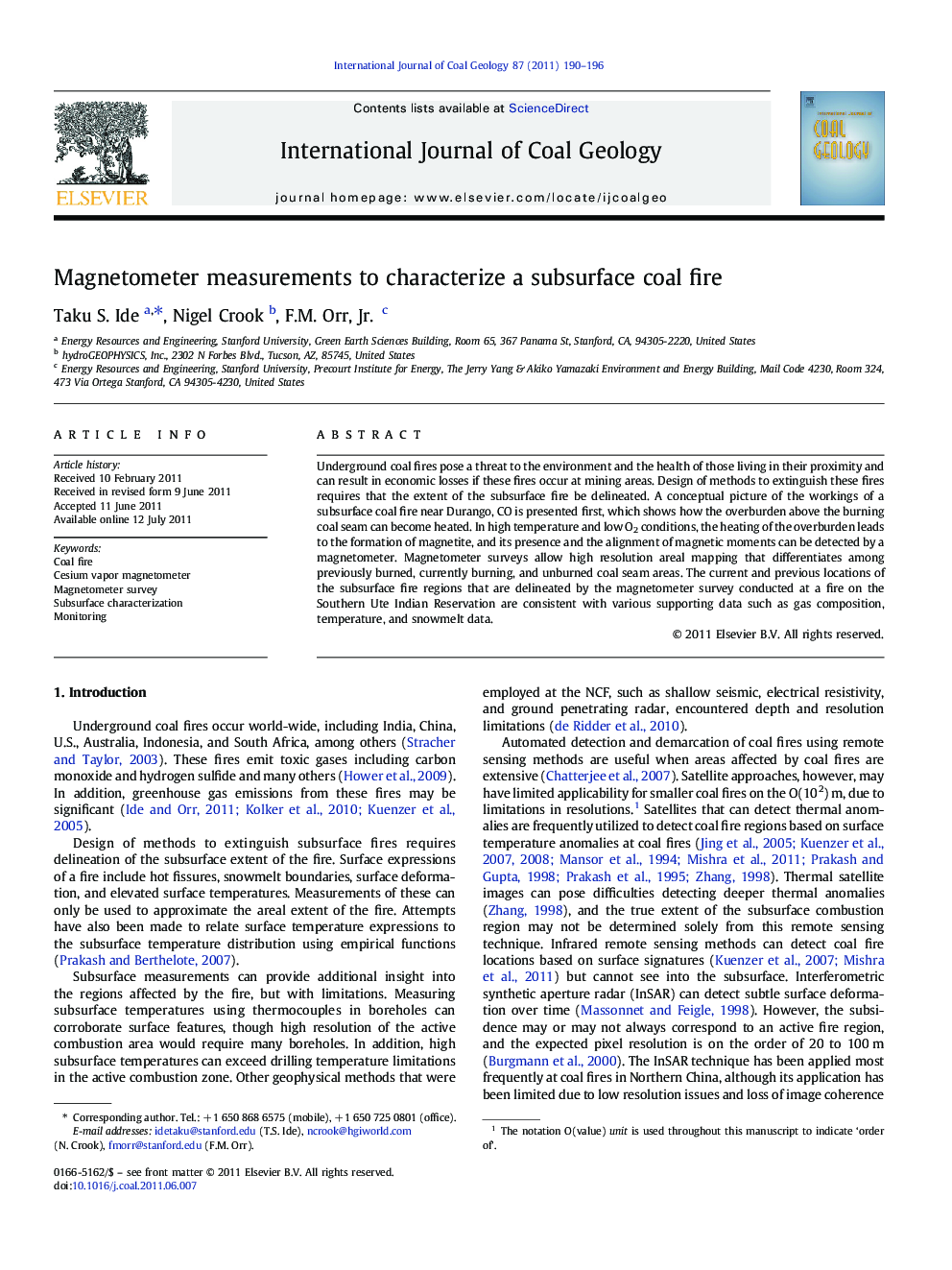| Article ID | Journal | Published Year | Pages | File Type |
|---|---|---|---|---|
| 1753559 | International Journal of Coal Geology | 2011 | 7 Pages |
Underground coal fires pose a threat to the environment and the health of those living in their proximity and can result in economic losses if these fires occur at mining areas. Design of methods to extinguish these fires requires that the extent of the subsurface fire be delineated. A conceptual picture of the workings of a subsurface coal fire near Durango, CO is presented first, which shows how the overburden above the burning coal seam can become heated. In high temperature and low O2 conditions, the heating of the overburden leads to the formation of magnetite, and its presence and the alignment of magnetic moments can be detected by a magnetometer. Magnetometer surveys allow high resolution areal mapping that differentiates among previously burned, currently burning, and unburned coal seam areas. The current and previous locations of the subsurface fire regions that are delineated by the magnetometer survey conducted at a fire on the Southern Ute Indian Reservation are consistent with various supporting data such as gas composition, temperature, and snowmelt data.
► Magnetic anomaly surveys were conducted over a subsurface coal fire. ► Magnetic anomalies distinguished burned, actively burning, and unburned regions. ► Supporting evidence corroborated the results from the magnetic anomaly survey. ► Repeat magnetometer surveys may be a cost-effective way to monitor coal fires.
